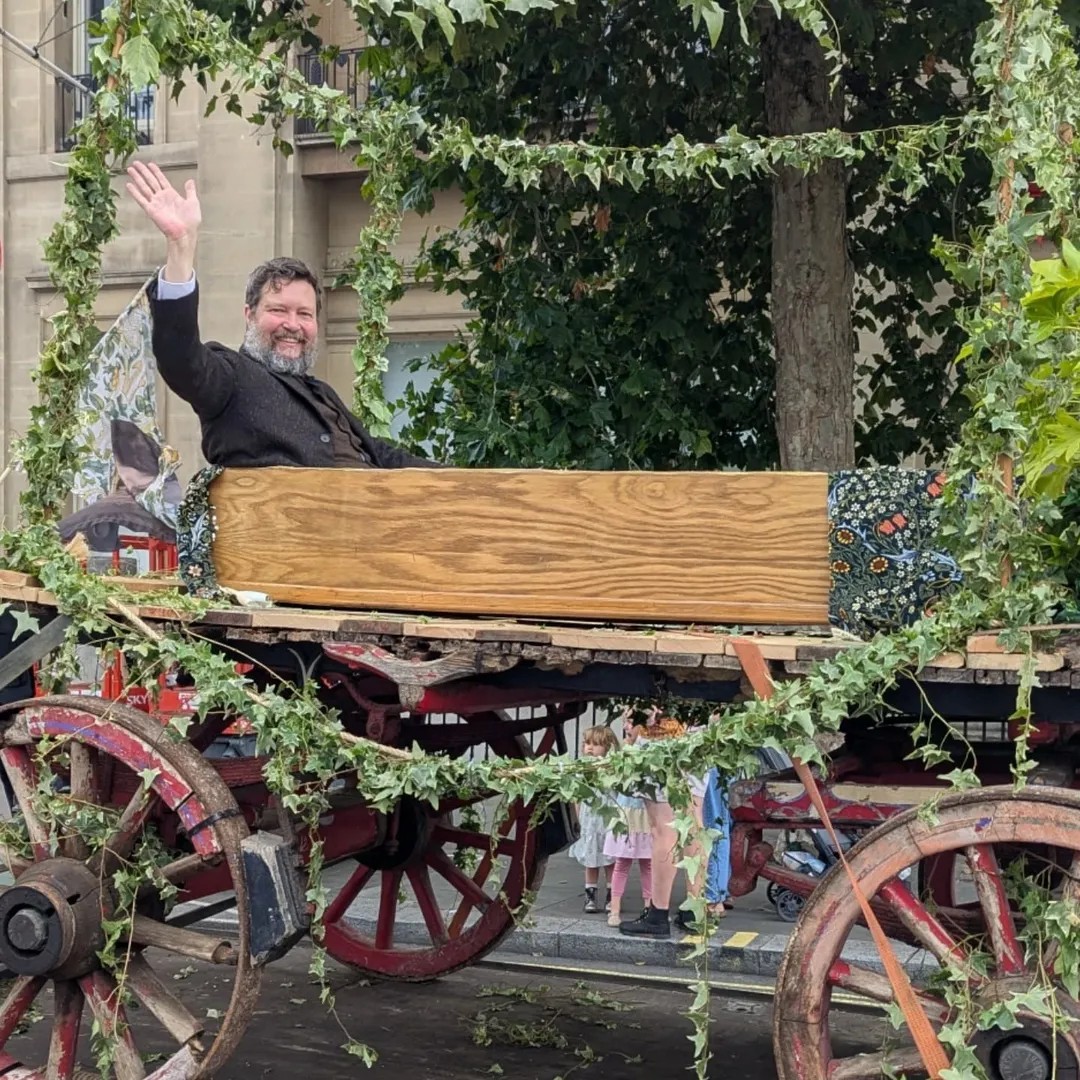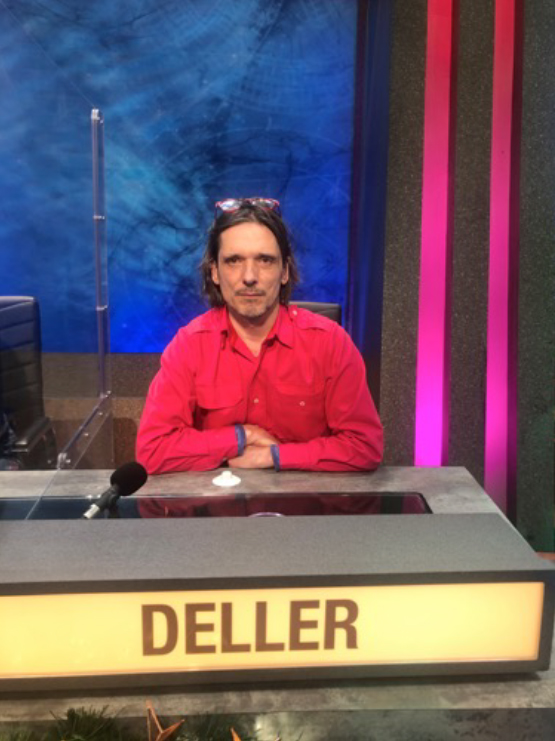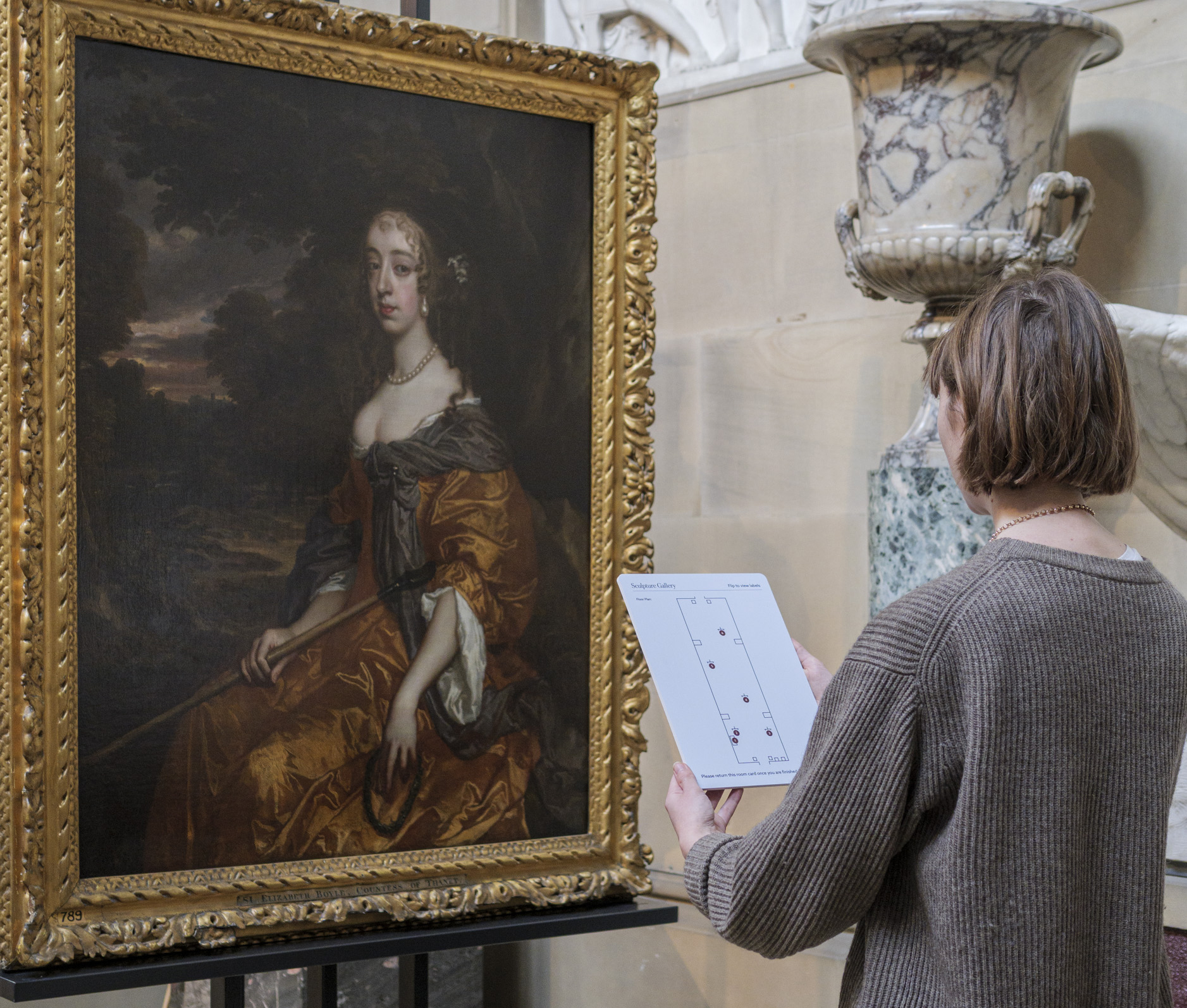The Future of the Museum is…Public?
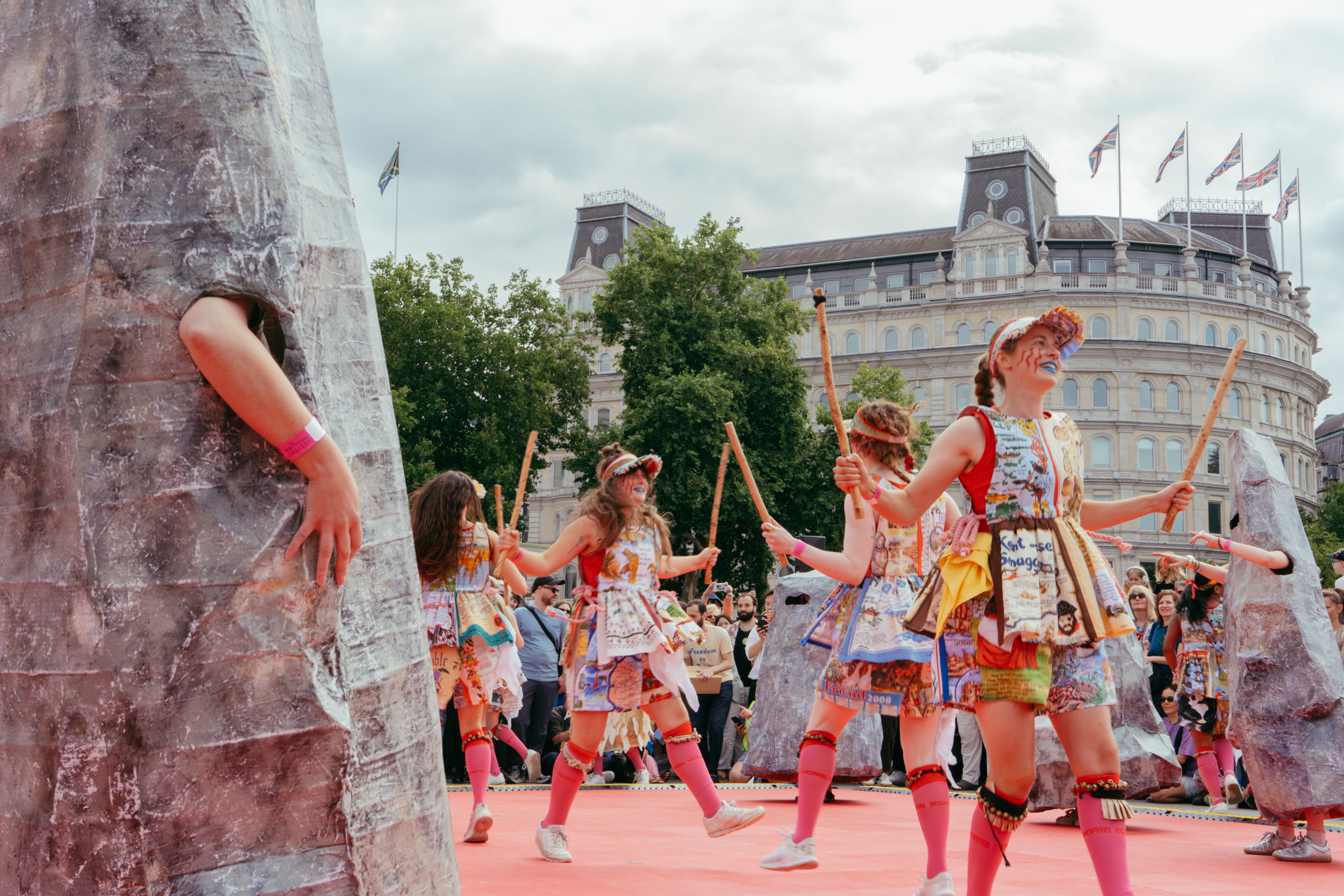
In the wake of his latest project ‘The Triumph of Art’, artist Jeremy Deller discusses the role of the contemporary museum, the power of collaboration and institutional fear of letting the public take the reins.
As an artist perhaps best known for creating large scale events and public performances, Jeremy Deller has balanced engagement with the art world and its institutions with a desire to foster a collaborative approach and bring others into the creative process. His work has often spilled out into the streets, injecting a sense of joyfulness and surprise into the public arena. His latest project, The Triumph of Art, was a half-party, half-protest designed to celebrate the 200th anniversary of the National Gallery. Taking the form of a large procession of mythological characters, including Adam and Eve, accompanied by a gigantic puppet and a flood of ravers and dancers down Whitehall and culminating in a public event in Trafalgar Square, the event was potentially not the cultivated and restrained celebration that the public might have expected from the National Gallery. We sat down with Jeremy Deller to understand his relationship to the institution and explore the process of dragging art out of the museum and into the light.
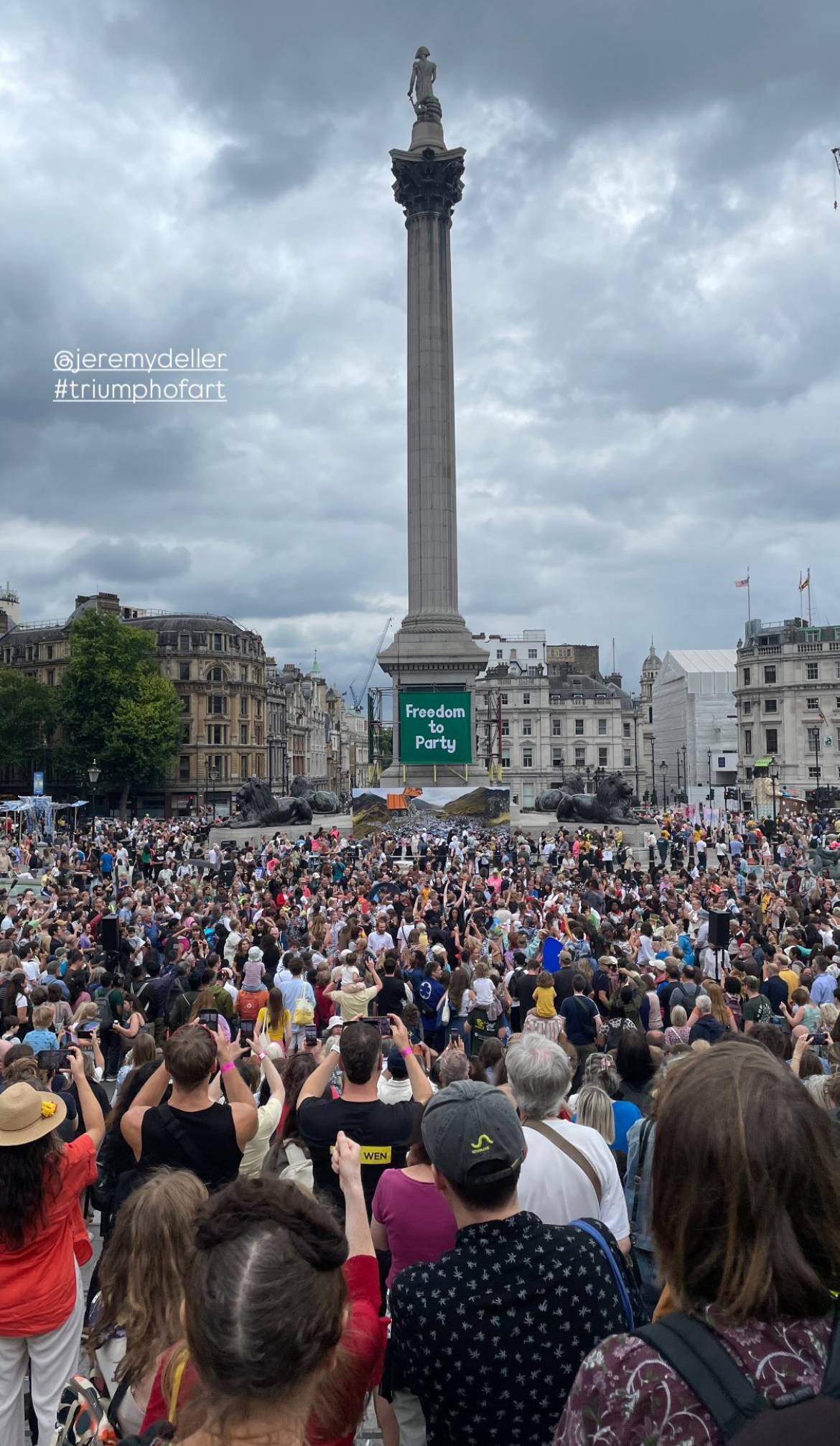
Were you surprised by the response of the public to The Triumph of Art?
I’m always surprised that people turn up, but people were excited and happy to be there which is what I wanted. I tried to make Trafalgar Square a little less monumental and harsh, to create at a human scale and remove the sense of corporate direction.
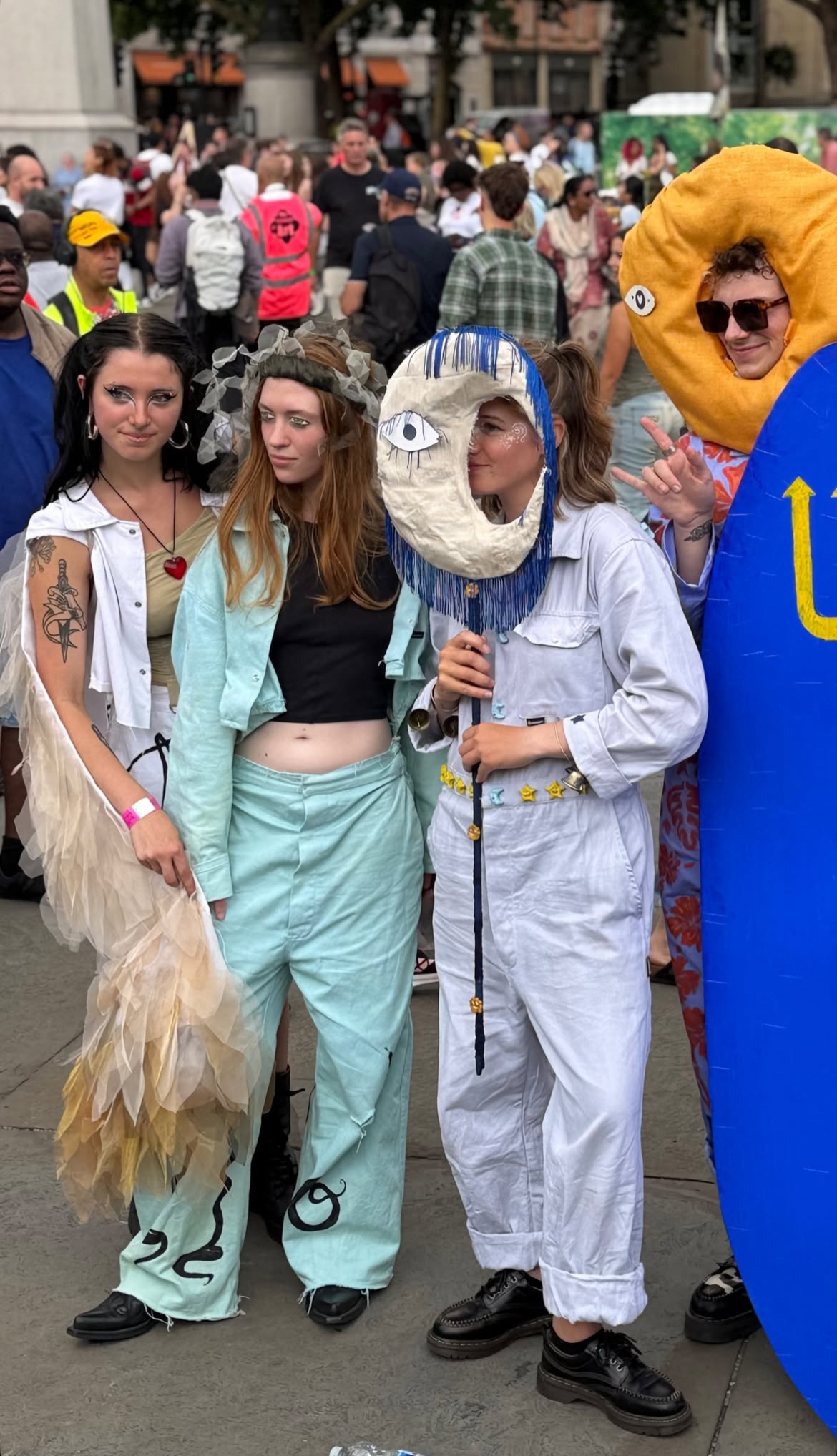
Did you face any challenges in organising the event?
I knew we had to do something outside because the National Gallery collection is very valuable and fragile, so you are immediately very restricted in what you can do. Even with the inclusion of sound as part of the event in Trafalgar Square, we had to have conservation meetings as the gallery was worried about the vibrations affecting paintings in the gallery. So from the outset there is a feeling that performance and art don’t go together, so you have to go outside.

Is an element of surprise and unpredictability a key part of your practice?
There is an element of surprise to my work (for me too), in that you can’t predict the actions of the public. People in museums are not used to the public behaving in ways that they can’t control. For The Triumph of Art in Trafalgar Square we wanted no bag searches, no barriers. We didn’t serve alcohol as that raises the stakes of any event but we wanted it as open as possible – a porous space.
When you work somewhere like Trafalgar Square you are going to get a mix of tourists that don’t know what’s going on as well as people who turn up because they know it’s happening. Museums have a mild fear of the public, it’s the idea of not knowing – who is the public? That’s one reason why they do all kinds of market research and cataloguing of visitors – they segment people.
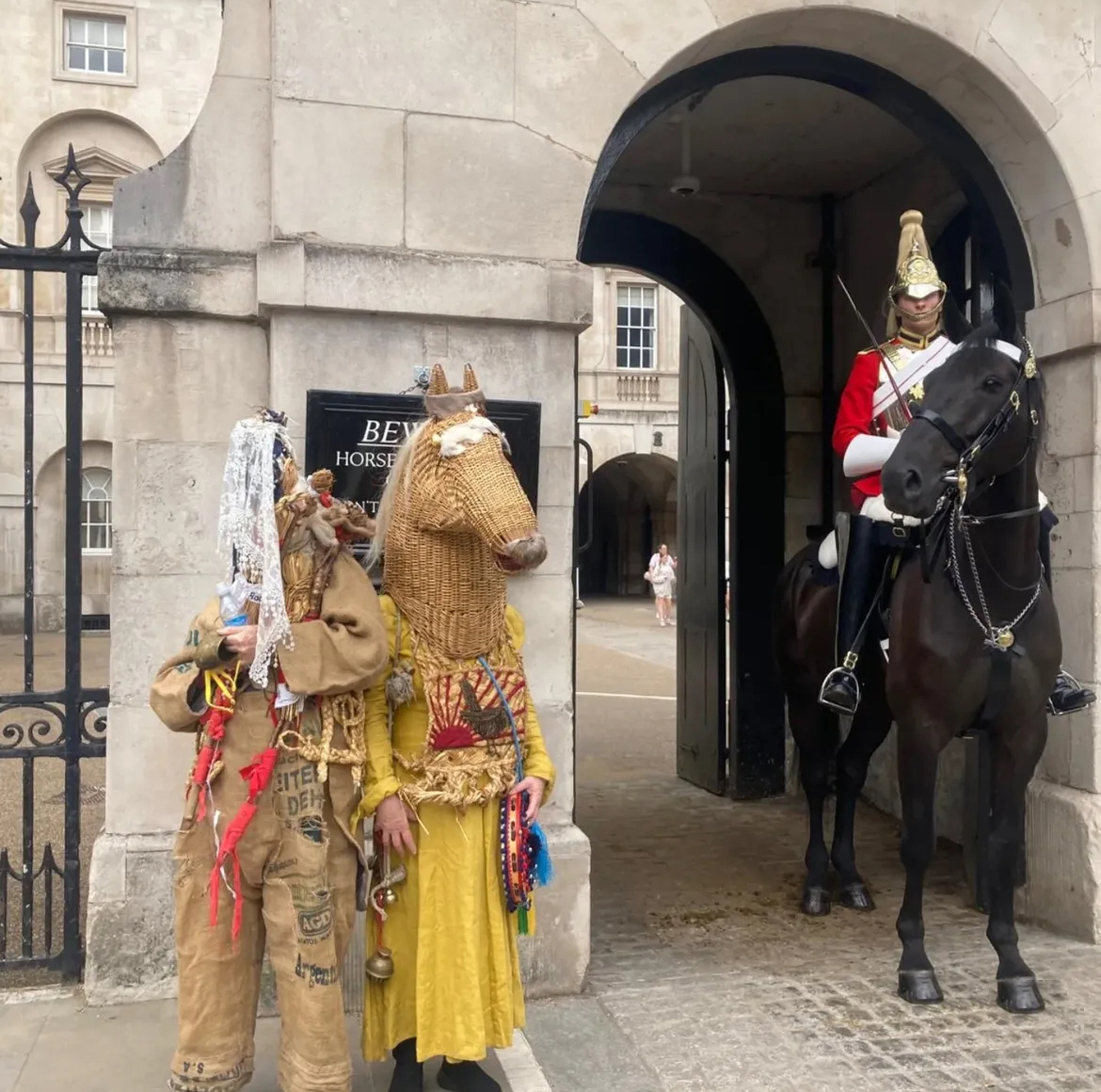
Performance is a critical element in your work, do you think it’s uniquely suited to addressing complex subject matter?
Performance is a way of exploring an idea – you don’t need to say something outright, instead it can be expressed through the body or through metaphor. It’s a way of having conversations without having to have a conversation. So when you create an event what you are really creating is an environment of possibility.
For this event we wanted to create a space where different things could happen and people could have different experiences. A lot of events are just screens and stages and an MC shouting at you from the stage. But for The Triumph of Art the idea was to create a space with twelve different elements where you could come and weave between them. Nobody went with full knowledge about what was going to happen or what they would experience, they could just explore and see what happened. And that’s good for people. People can handle it.
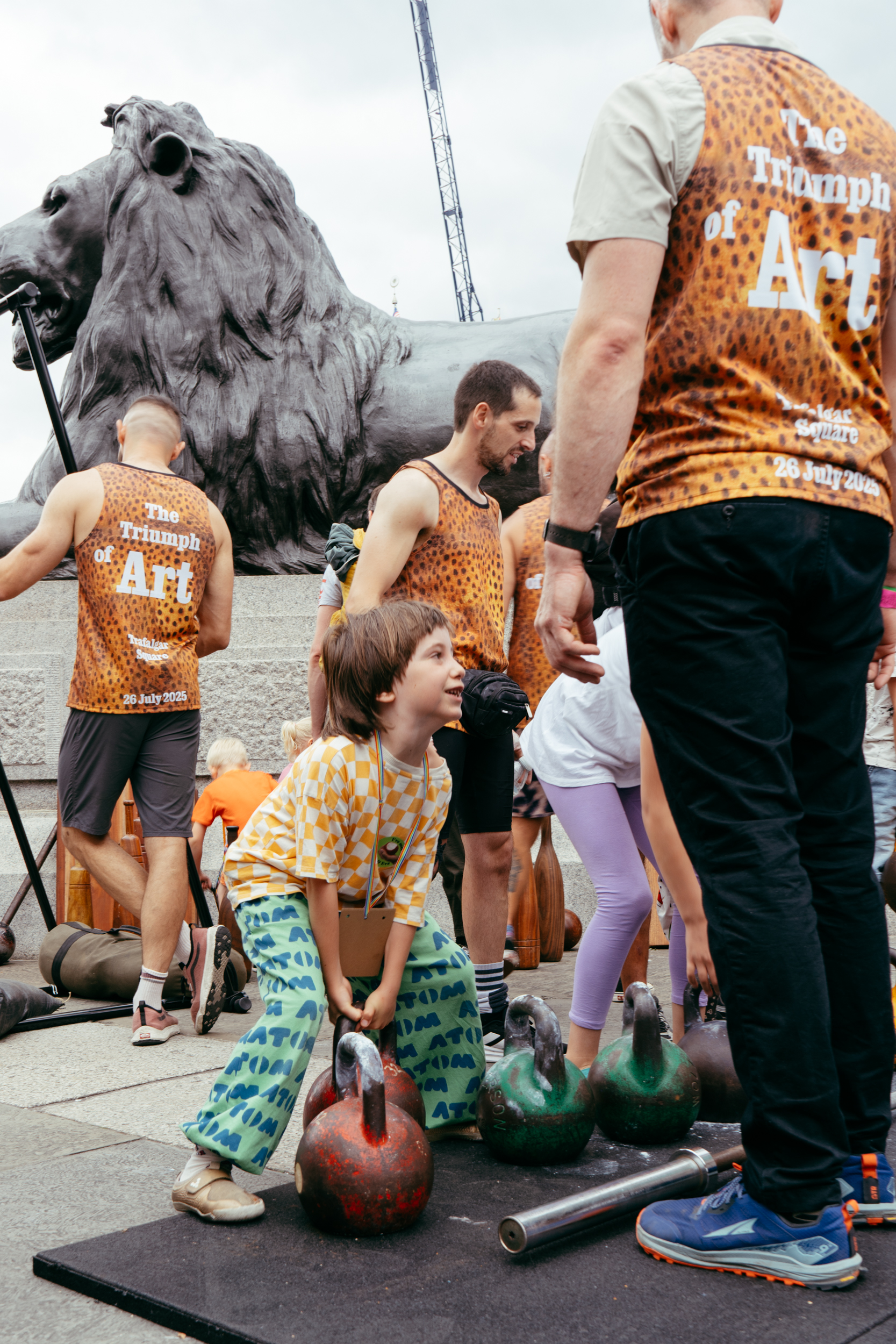
Usually collaborations between an artist and museum result in an exhibition, but this seems so much more than that. What do you think this experience offered that an exhibition can’t?
An exhibition is the equivalent of reading a small book. You often feel a duty to read all the wall text as you move through what is often staged as a metaphorical and physical journey through time. Sometimes the text is good, sometimes it’s terrible – usually you just get an anodyne description of the painting in front of you. Or there’s the ones that ask you questions – it’s very American, wall texts that want to be your friend. What you want from the text is something to think about, something that you hadn’t considered.
Exhibition design is also about space management – how can we get three hundred people per hour through this space safely? It’s a type of mind and body control – these museums say that someone will spend ten minutes in this room and ten minutes on this topic. It’s like the way animals are taken through the slaughterhouse – they can’t know what’s happening to them or they’ll panic!
For institutions, the public occupying exhibitions is one thing but for people to come en masse, to participate less passively and engage in the act of making, that’s potentially an unnerving idea. They believe that it’s just their role to hold objects but expectations have changed and institutions have been slow to catch up. The artists they work with are usually all dead. They aren’t used to working with artists that are actually alive and have a voice or an opinion. Van Gogh can’t do that. They can put a sunflower on a tea towel, and he can’t complain but if he was alive today he might hit the roof.

Would you like to see more institutions running events like these and welcoming the public more fully?
Yes, there are lots of people that are trying to do this at the moment. On one hand institutions hold priceless artefacts and they are vulnerable physically and culturally. They don’t have strength. You can walk in and throw your soup over a painting so in some ways these places are free and open and in another they need to be secure. It’s a social contract between the public and the institution, based on trust and mutual respect.
But usually the public are fine, they get it. Museums can institutionalise its workforce which some people find comfort in, in surrendering to the rules and structure and bureaucracy. So there is a tension within institutions.
